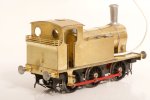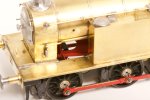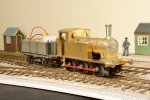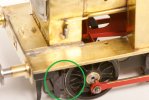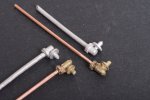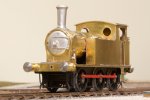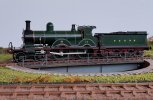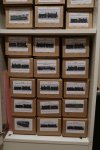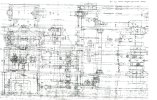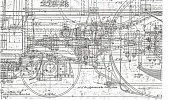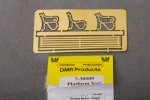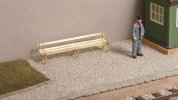RichardG
Western Thunderer

Returning to the chassis to add the brake gear, I have fattened up the rearmost pull rod to make it look more like a forging. This is the original etched part along the middle, with laminations on each side.
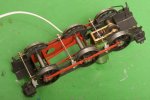
I had a horrible thought that I was going to fail at the very end of the build, with no room for the brake pull rods behind the wheels. But the rods are a fraction thinner than the turned-down bosses of the wheel bushes, and I have shoehorned them in, and the middle axle still has all of its sideplay.

I have rearranged the front sand pipes along the way. Amazingly, they did not break off. These are now supporting the brake gear, or perhaps the other way round.

The partially-painted brake gear looked like a patchwork quilt so I have painted everything for this photo.
The wheels do still go round and round, and I have achieved a personal objective in that the brakes look as though they might be able to stop the loco. It has taken quite a lot of effort to do this. I would go for larger gaps for a loco with two-rail electrification.




